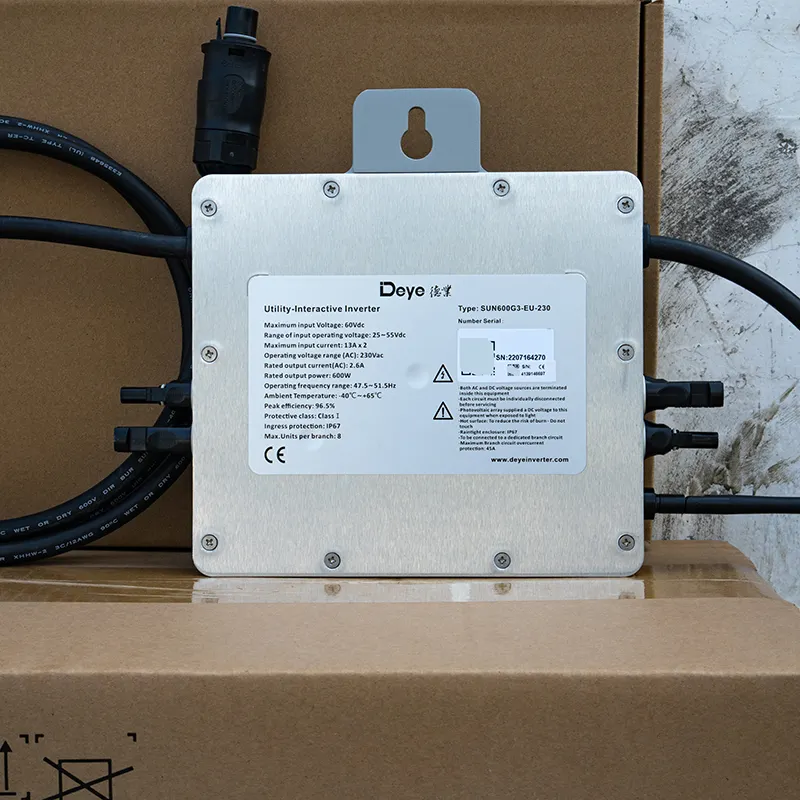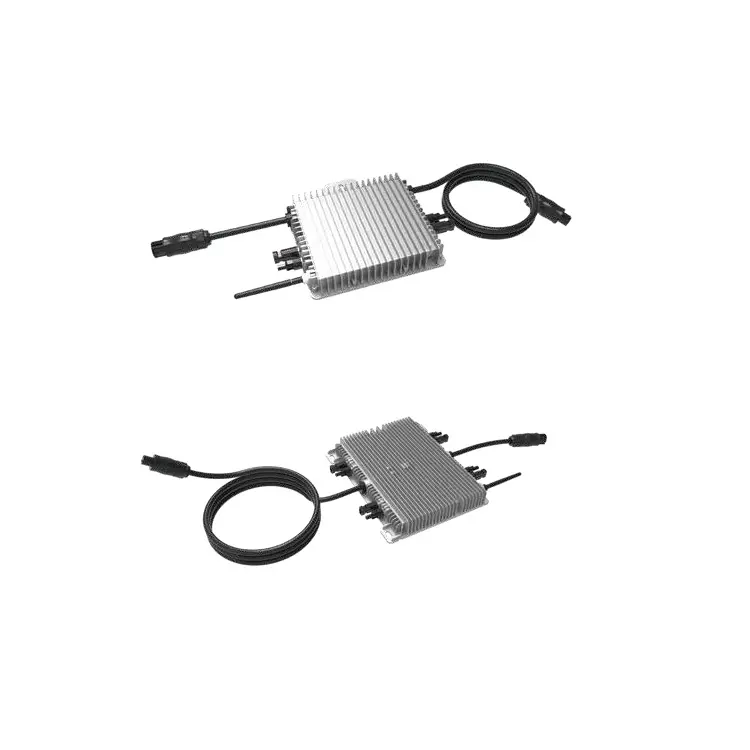An on-grid solar inverter, often called a grid-tied inverter, connects your solar panel system to the main power grid. When your panels produce excess energy, this inverter helps feed it back into the grid. This can earn you credits on your electricity bill. If your panels don’t generate enough power, the grid supplies the shortfall.
The on-grid inverter plays a crucial role in this two-way exchange. It not only converts the solar DC power to AC for home use but also ensures it matches the grid’s requirements. Opting for this system can be cost-effective and eco-friendly!

How does an on-grid solar inverter work?
Solar energy is making waves as a clean and sustainable power source. At the heart of many solar setups is the on-grid solar inverter. But what role does it play, and how exactly does it function?
Converting DC to AC Power
The primary role of any solar inverter is straightforward: convert direct current (DC) into alternating current (AC). Solar panels generate DC electricity when they absorb sunlight. Our homes and most of the appliances inside them, however, operate on AC power. The on-grid inverter bridges this mismatch, ensuring the power from your panels is usable for your home.
Synchronizing with the Grid
An on-grid inverter doesn’t just convert power; it also synchronizes it. The electricity grid operates at a specific frequency. The inverter ensures that the AC power it produces matches the frequency and voltage of the grid. This synchronization is crucial for safe and efficient feedback of excess power into the grid.
Feeding Excess Power Back
One of the best features of an on-grid system is the ability to feed surplus energy back to the grid. Let’s say it’s a sunny day, and your panels are producing more power than your home needs. Instead of wasting this extra energy, the inverter helps channel it back into the main grid. This process can earn you credits, reducing your electricity bill.
Drawing Power When Needed
Solar energy generation isn’t consistent. It varies with the time of day and weather conditions. During cloudy days or nighttime, your panels might not produce enough power for your needs. In such cases, the on-grid inverter allows your home to draw power from the grid. It ensures an uninterrupted power supply, regardless of solar conditions.
Safety Features and Monitoring
A crucial aspect of an on-grid inverter’s job is safety. If there’s an outage, the inverter automatically stops feeding power back to the grid. This feature, known as anti-islanding, protects workers repairing the grid from unexpected power surges. Additionally, many modern inverters come with monitoring systems. These systems track power production, consumption, and feedback, helping you understand and optimize your energy use.
Maximizing Power Production
Some on-grid inverters feature Maximum Power Point Tracking (MPPT). The MPPT technology ensures the inverter draws the most power possible from your panels, especially during less-than-ideal solar conditions. It continuously adjusts, ensuring optimal power conversion and efficiency.
What is the difference between on and off-grid solar inverter?
If you’ve been exploring solar energy options, you’ve probably come across the terms “on-grid” and “off-grid” inverters. But what exactly do they mean? Let’s break it down in simple terms.
On-Grid Solar Inverter
Connection to the Main Grid: An on-grid inverter connects your solar panels directly to the public electricity grid. This is its most defining feature.
Feed-in Tariff Benefits: With this setup, any excess power your panels produce can be fed back into the grid. In many places, electricity companies might pay or credit you for this!
No Storage: One thing to note: on-grid systems don’t usually have storage. If there’s a power cut, your system won’t work, even if the sun is shining brightly.
Cost-Effective: On-grid inverters are generally less expensive than their off-grid counterparts. They don’t require batteries, which can be a big saving.
Maintenance: These systems require less maintenance. No batteries mean no battery replacements or related upkeep.
Off-Grid Solar Inverter
Independence is Key: Off-grid inverters are all about independence. They operate without any connection to the public electricity grid.
Storage is Essential: To function without the grid, these systems use batteries. Your solar panels charge these batteries, and your home draws energy from them.
24/7 Power (conditions apply): As long as your batteries have charge, you’ll have power. This can be especially handy during grid outages. But remember, your stored energy is finite. If you use it all, you’ll need to wait for sunlight to recharge.
Initial Costs are Higher: Off-grid systems can be pricier initially. Batteries and the related components come with added costs.
Maintenance Alert: Batteries don’t last forever. You’ll need to replace them every few years, depending on the type and usage.
Which One is Right for You?
Evaluate Your Needs: Think about what you need. Do you want a backup during power cuts? Or are you looking to reduce your electricity bill?
Location Matters: If you’re in a remote location with no grid access, off-grid might be the way to go.
Budget: On-grid systems might be lighter on the wallet initially. But off-grid systems offer power security.
Final Words
The choice between on and off-grid inverters boils down to your individual needs and circumstances. On-grid systems are connected to the public electricity grid, often more affordable, and require less maintenance. On the flip side, off-grid systems offer independence from the grid, but they come with the added responsibility of battery maintenance.

FAQs
What is an on-grid solar inverter?
An on-grid solar inverter connects your solar panels to the public electricity grid. It converts the sun’s energy into power for your home and can send extra energy back to the grid.
Do I get paid for the excess power I generate?
Yes, many regions offer feed-in tariffs or net metering. This means you might receive money or credits for the surplus energy you feed back into the grid. Always check local policies!
What happens during a power outage?
With most on-grid systems, they’ll shut down during power outages. This is a safety feature to protect utility workers fixing the grid lines.
How do I maintain my on-grid solar inverter?
On-grid inverters require minimal maintenance. Just ensure it’s free from dust, and regularly check for any alert messages or lights. If you see issues, call a professional.
Can I switch from on-grid to off-grid later on?
Switching requires additional equipment like batteries and possibly a different inverter. While it’s doable, consult a solar expert for the best advice on your transition.
